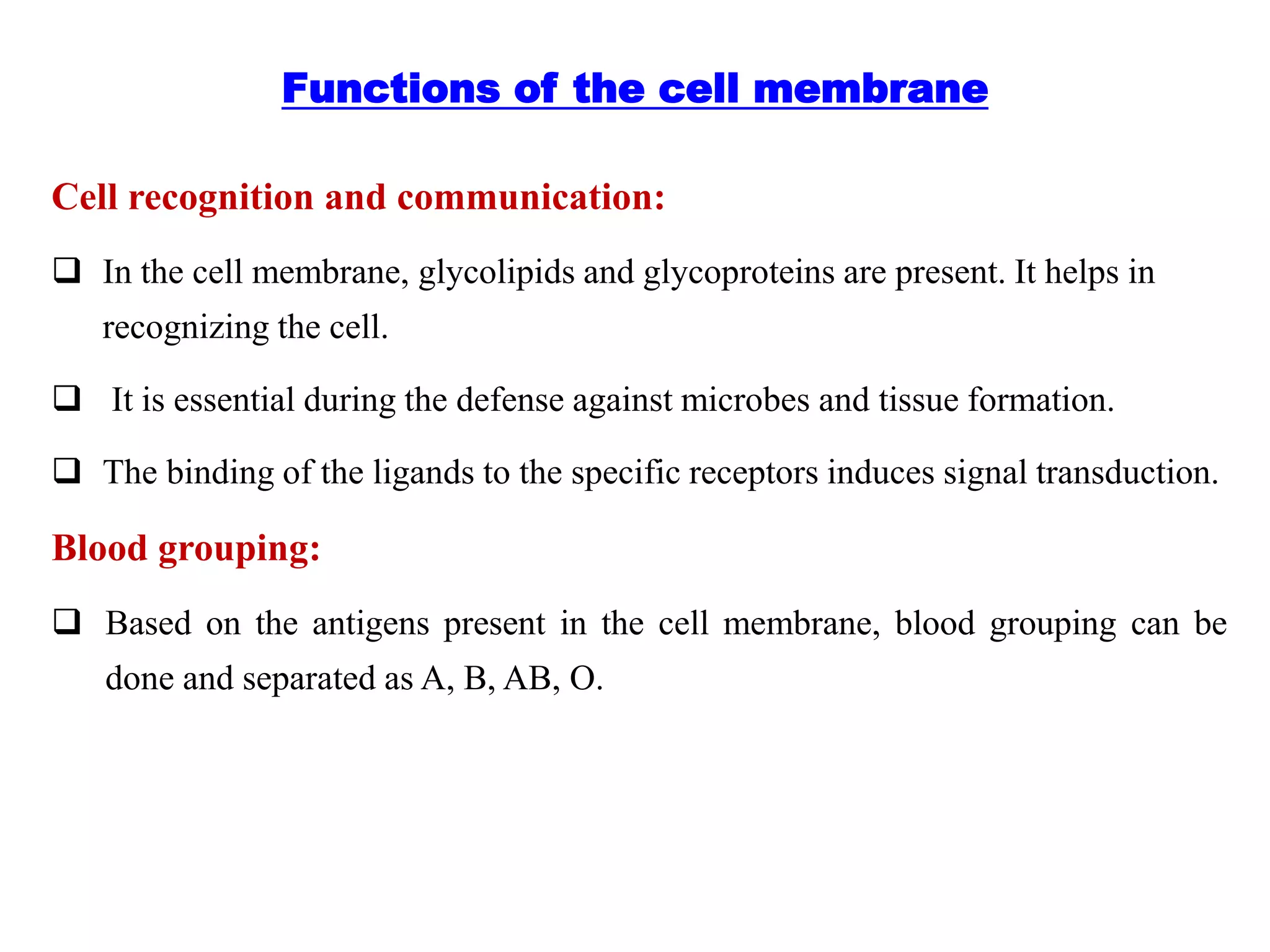The cell membrane, also known as the plasma membrane, defines the boundary of the cell and regulates what passes in and out. It is composed primarily of lipids and proteins arranged in a fluid mosaic structure. This structure allows the membrane to perform critical functions for the cell like controlling transport, sending and receiving signals, and interacting with other cells. The fluid mosaic model best explains the dynamic and semipermeable nature of the cell membrane.

























